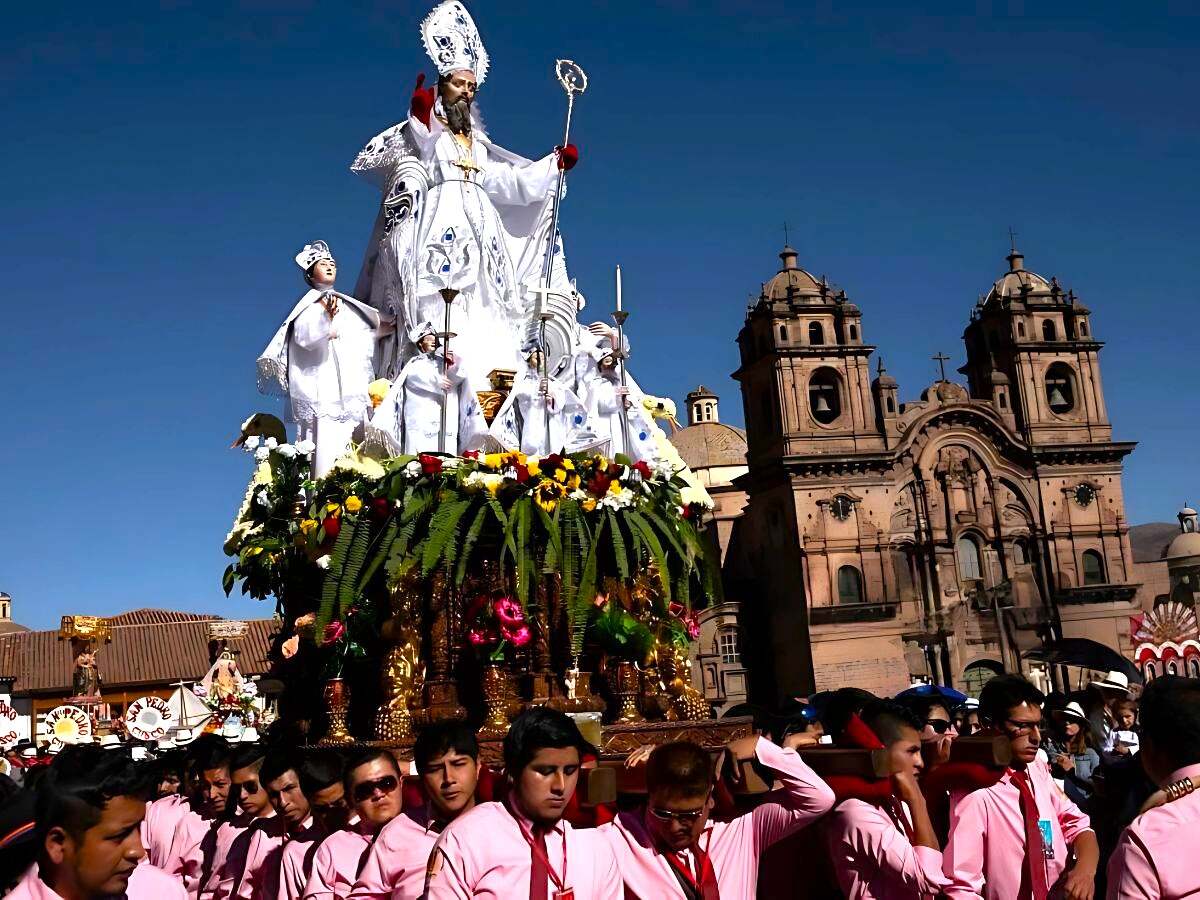Every June, Corpus Christi in Cusco becomes one of the most significant and eagerly awaited religious events for the population. This celebration, held on June 19, brings together thousands of faithful and visitors, who gather to witness the procession of images of saints and virgins from different districts and temples in the city. The day before the main event, these images are carried on floats to the Cusco Cathedral, where they remain overnight.
During the Corpus Christi festival in Cusco, the historic center presents a space of color, music, and religious fervor, thanks to the bands and devotees who accompany the procession of the sacred images.
Origin of Corpus Christi in Cusco
Corpus Christi dates back to medieval Europe, specifically the 13th century. It was in 1264 that Pope Urban IV instituted it as an official holiday, inspired by the famous “Miracle of Bolsena.” According to tradition, during Mass, a consecrated host began to bleed, reaffirming the belief in the real presence of Christ in the Eucharist.
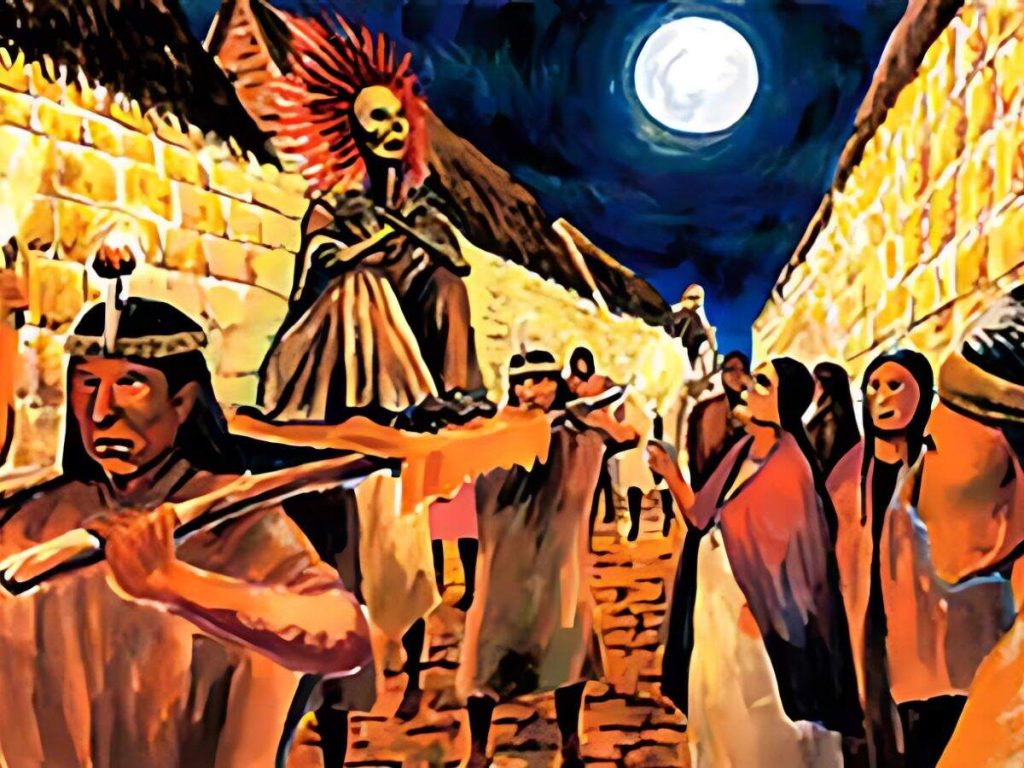
However, long before the arrival of the Spanish, the Incas already performed a ceremony similar to Corpus Christi, dedicated to the worship of the mummies of their ancestors. These were taken from their temples and carried in procession through the city of Cusco at the beginning of Inti Raymi, the great festival of the Sun. This ceremony was a way to keep alive the connection with the ancestors and the beliefs of life after death.
With the arrival of colonization, this tradition was replaced by processions of floats carrying Catholic saints and virgins, as part of an evangelization strategy, giving rise to a mestizo festival that is still celebrated today.
The Silver Carriage
One of the most important elements of Corpus Christi in Cusco, which marks the beginning of this tradition, is the Silver Carriage. Adorned with fine silver details, this carriage carries the image of the Blessed Sacrament of the Eucharist. Its brilliance and elegance stand out amidst the colorful parade, symbolizing the royal and sacred presence of Christ.
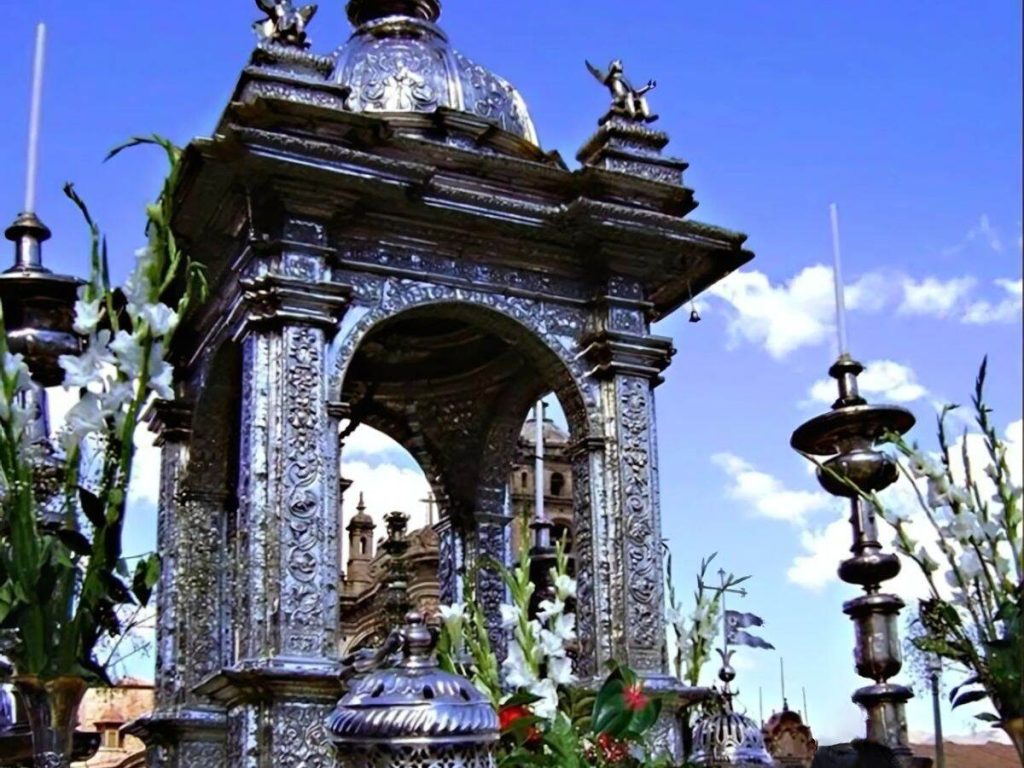
Corpus Christi in Cusco
Corpus Christi in Cusco is one of the most important festivals in the city’s religious and cultural calendar, along with Inti Raymi. Both celebrations take place in June and reflect the spiritual tradition of the people of Cusco. During Corpus Christi, images of saints and virgins from different parishes are carried in a procession through the streets to reach the Cusco Cathedral, where they remain together for several days.
Today, beyond being an act of faith, this procession has also taken on a symbolic character of devotion and friendly rivalry. Each parish strives to be first at the cathedral, with San Antonio Abad traditionally arriving first, closely followed by Saint Sebastián and Saint Jerome, whose districts are also known for their organization and punctuality.
Below, we present the 15 saints and virgins who are part of this impressive festival, along with the localities from which they originate:
Saint Anthony the Abbot
Also known as Saint Anthony the Great, he was a Christian monk from Egypt, born around 251 A.D. He is widely venerated for his life of spiritual retreat and for resisting demonic temptations while wandering through the desert.
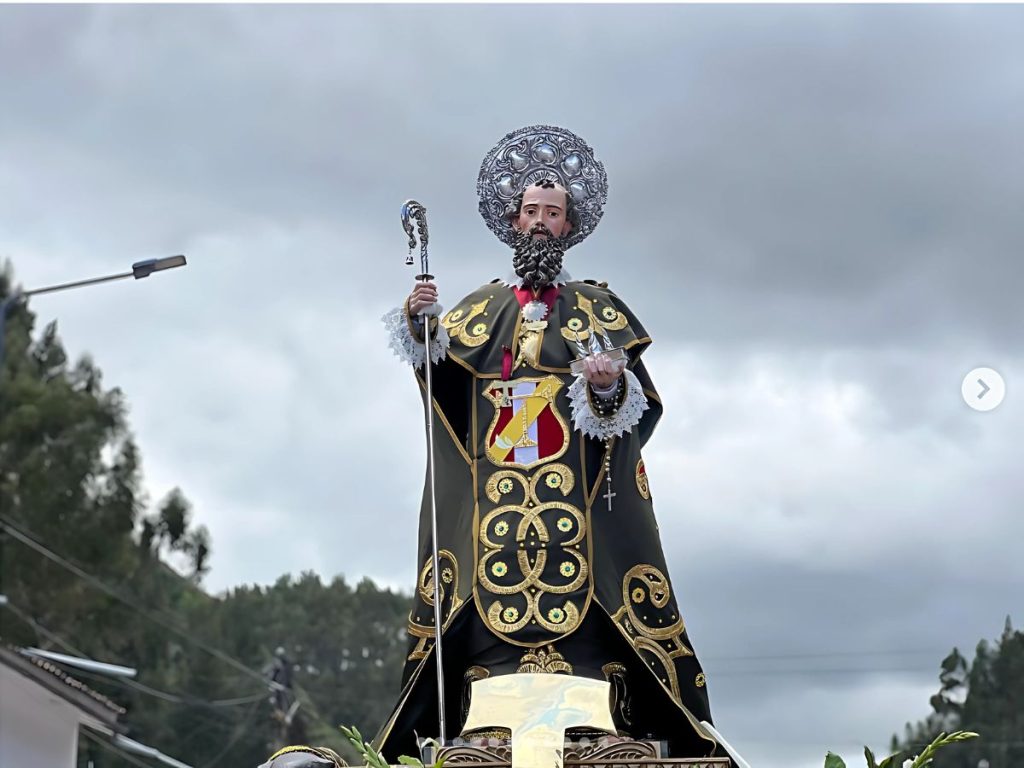
During Corpus Christi in Cusco, Saint Anthony the Abbot is traditionally the first saint to arrive at the Cusco Cathedral. His image comes from the Church of San Cristóbal, located at approximately 3,550 meters above sea level. A striking feature of his representation is the presence of a small pig at his side, symbolizing the temptations he faced and overcame during his life of faith.
Patron Saint Jerome
Saint Jerome is known as one of the great Fathers of the Church and is especially remembered for translating the Bible into Latin, a version known as the Vulgate. Due to this significant contribution, he was named a Doctor of the Catholic Church.
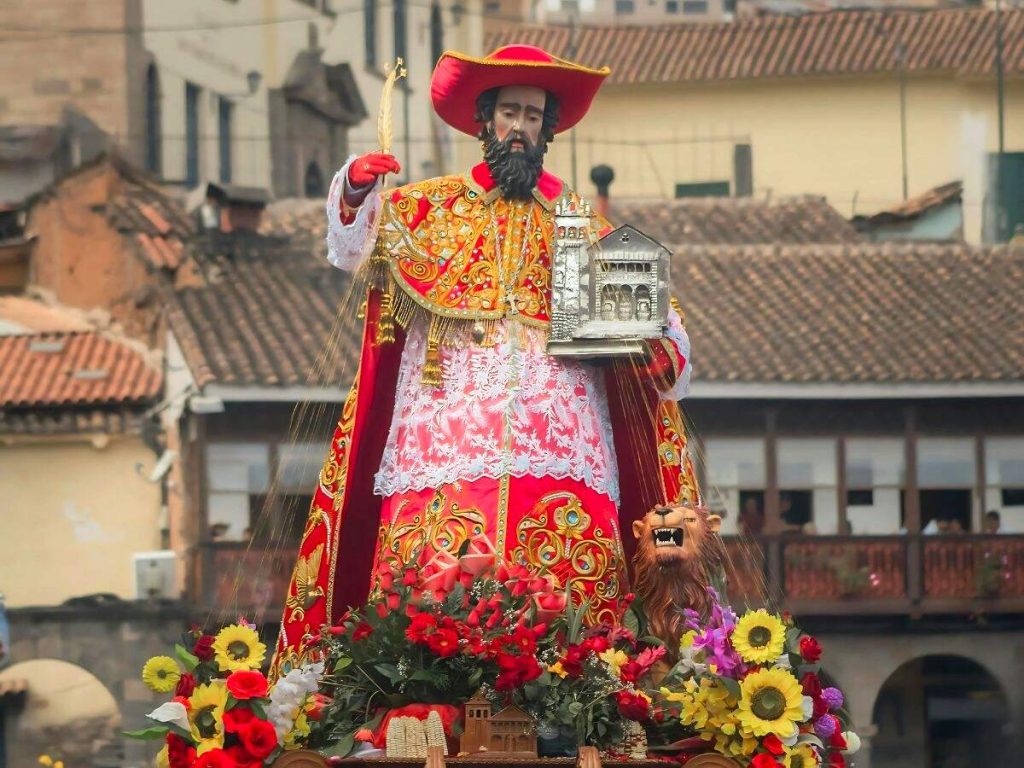
During the Corpus Christi procession in Cusco, Saint Jerome is distinguished by being accompanied by the figure of a lion—a symbol that alludes to a legend in which he tamed the animal after healing its wound. His image arrives from the district of San Jerónimo and traditionally enters the Cusco Cathedral together with Saint Sebastian, amid music and dances.
Saint Sebastian
Saint Sebastian is a Christian martyr revered for his courage and unwavering faith. He was a Roman soldier who, upon confessing his Christian faith, was condemned to die pierced by arrows.
In the Corpus Christi celebration in Cusco, his image arrives from the district of San Sebastián. A unique feature of this procession is that the carriers carry him barefoot and tied with ropes as a sign of devotion. Saint Sebastian is one of the first saints to arrive at the Cusco Cathedral, and his entrance is accompanied by bands, dancers, and a large crowd of faithful, making him one of the most notable presences of the festival.
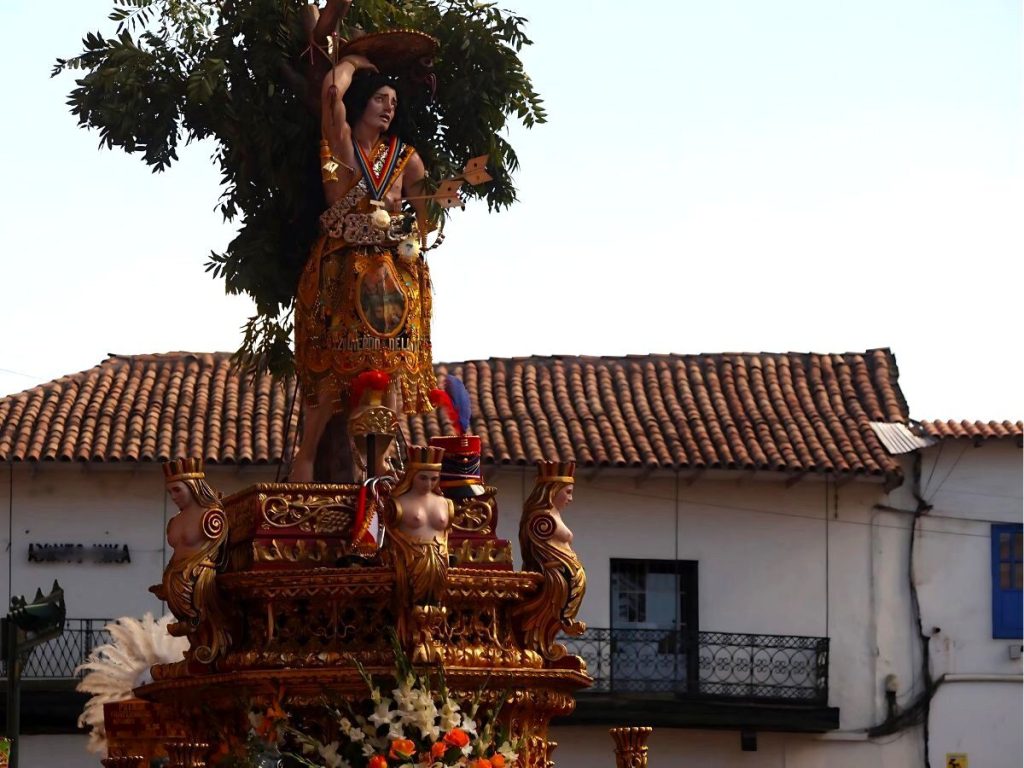
An interesting and representative detail in some editions of the Corpus Christi in Cusco is that Saint Sebastian appears with a little parrot on the tree, symbolizing the place of his martyrdom.
Saint Christopher, the heaviest saint of Corpus Christi in Cusco
Saint Christopher is recognized as the patron saint of travelers and walkers. According to Christian tradition, he was a man of great height and strength who helped people cross rivers, and one day unknowingly carried the child Jesus, who revealed His identity to him upon reaching the other side. Since then, Saint Christopher has been considered a symbol of protection on the roads.

In the Corpus Christi in Cusco, his image is carried from the Temple of Saint Christopher, located in an elevated area of the historic center at approximately 3,550 meters above sea level. His arrival at the Cusco Cathedral is impressive, as his platform is one of the heaviest and largest in the entire festival.
Saint Barbara
The Virgin Saint Barbara is a martyr of Christianity known for her great spiritual strength and is venerated as a protector against storms and lightning; she is also considered the patron saint of farmers. According to tradition, she was locked in a tower by her father because of her faith, and today she symbolizes dedication to the Catholic faith.

In the Corpus Christi in Cusco, the image of Saint Barbara comes from the district of Poroy, one of the farthest from the city, located at about 3,570 meters above sea level. Her journey to the Cusco Cathedral is one of the longest and most demanding, making her participation one of the most moving. Accompanied by devoted followers, musicians, and dancers, her arrival represents a profound act of faith, commitment, and tradition.
Saint Anne
Saint Anne, mother of the Virgin Mary and grandmother of Jesus, is revered as a symbol of wisdom, patience, and family devotion.
During Corpus Christi in Cusco, her image is one of the most prominent, as it comes from the traditional Santa Ana neighborhood, located in the upper part of Cusco’s historic center in the Karmenqa district. Her procession to the Cathedral is accompanied by followers, bands, and dancers, usually arriving together with the Virgin Saint Barbara.
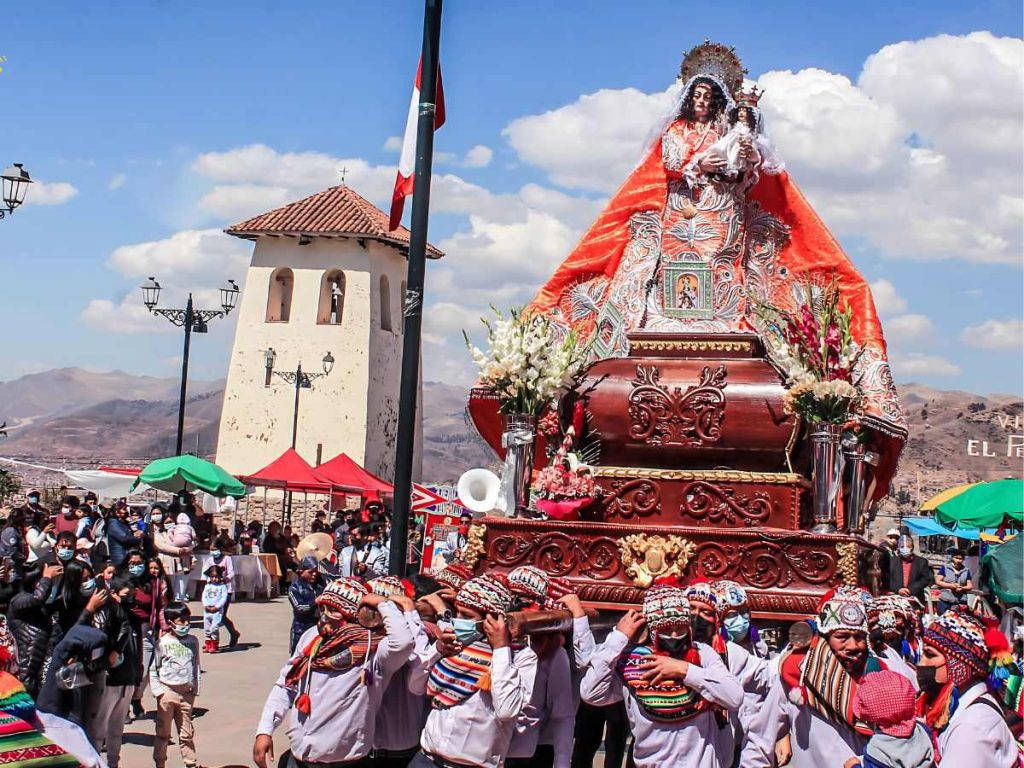
Saint Santiago
Patron Saint Sabtaigo is recognized for his role in the evangelization of America and is widely known as Santiago Mataindios in South America. His image in Corpus Christi comes from the historic Santiago neighborhood. During the procession, his figure appears mounted on a horse, representing his role as a warrior and defender of the faith.
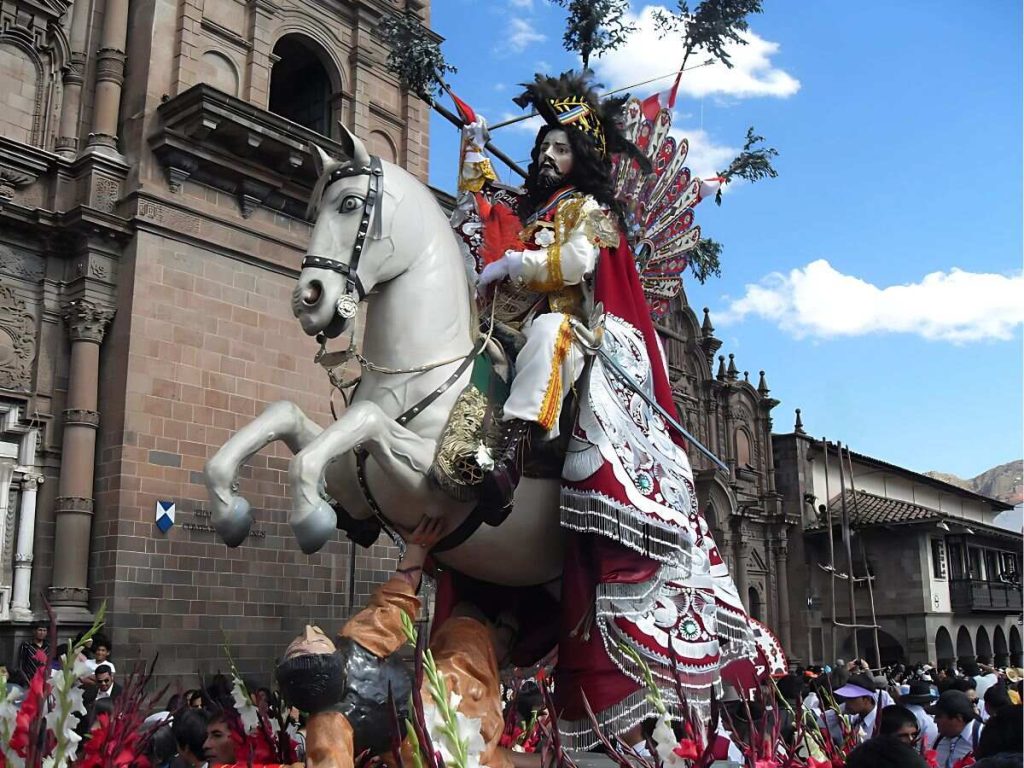
Saint Blaise
Saint Blaise, recognized as the patron saint of the throat, is revered for his kindness and the miracles attributed to him regarding health. In Christian tradition, he is recognized as a symbol of care and protection.
In the Corpus Christi in Cusco, the image of Saint Blaise comes from the San Blas district, one of the most beautiful and bohemian neighborhoods in Cusco. His procession to the Cathedral is accompanied by many faithful, musicians, and dancers who pay homage to this protective saint.
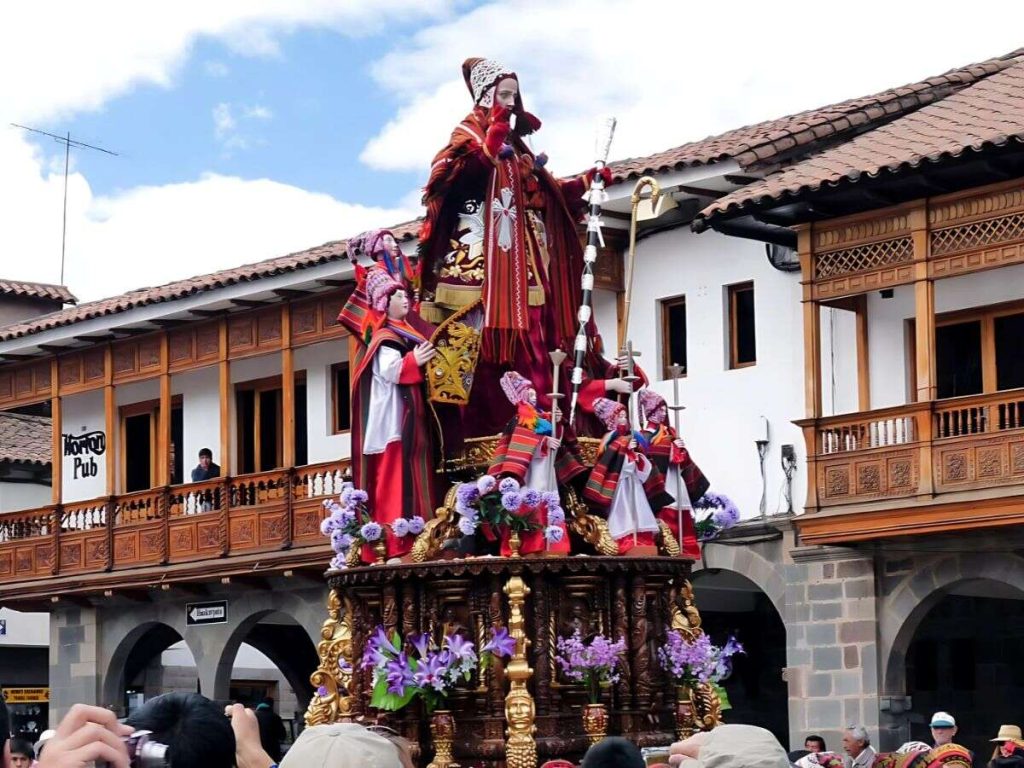
Saint Blaise is considered the patron of artisans and is widely venerated for his closeness to hardworking and humble people. During the Corpus Christi procession in Cusco, he is identified by wearing a cape, a staff, and a small hat, elements that represent his role as a bishop in Christian tradition.
Saint Peter
Saint Peter, known as the first pope of the Catholic Church and one of Jesus’ closest disciples, is one of the most important figures in the Corpus Christi in Cusco. His image comes from the Church of Saint Peter, located near the Church of Santa Clara in Cusco’s historic center.

During the procession, he is depicted carrying keys, a symbol associated with the keys to heaven and the Church.
Saint Joseph
Saint Joseph, patron of husbands and carpenters, was the husband of the Virgin Mary and the earthly father of Jesus. In Catholic tradition, he symbolizes humility, work, and protection of the home.
In the Corpus Christi celebration in Cusco, his image arrives from the Parish of Bethlehem, located in the city’s historic center.
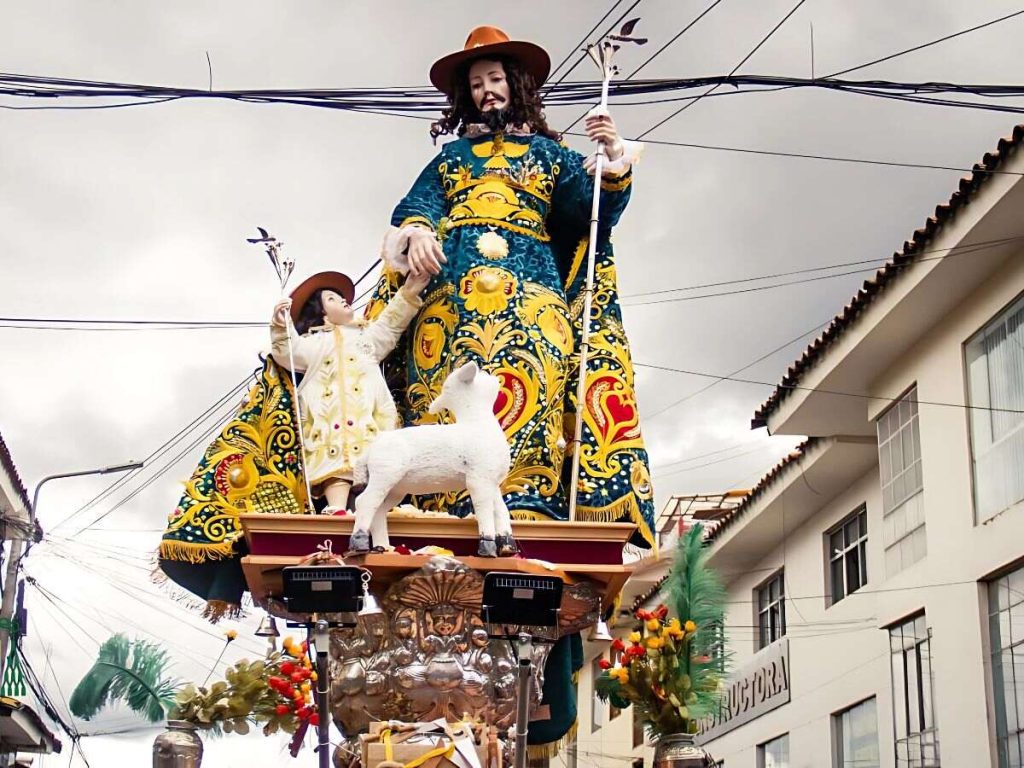
During the procession, Saint Joseph is portrayed holding a lily flower in his hand, symbolizing purity, and is often accompanied by the child Jesus.
Virgin of the Nativity
The Virgin of the Nativity is one of the manifestations of the Blessed Virgin Mary, also known as the Mestiza Virgin because her image combines Andean and Spanish features. Her feast is celebrated with great devotion in Cusco on September 7, 8, and 9, considered one of the city’s most important religious celebrations.
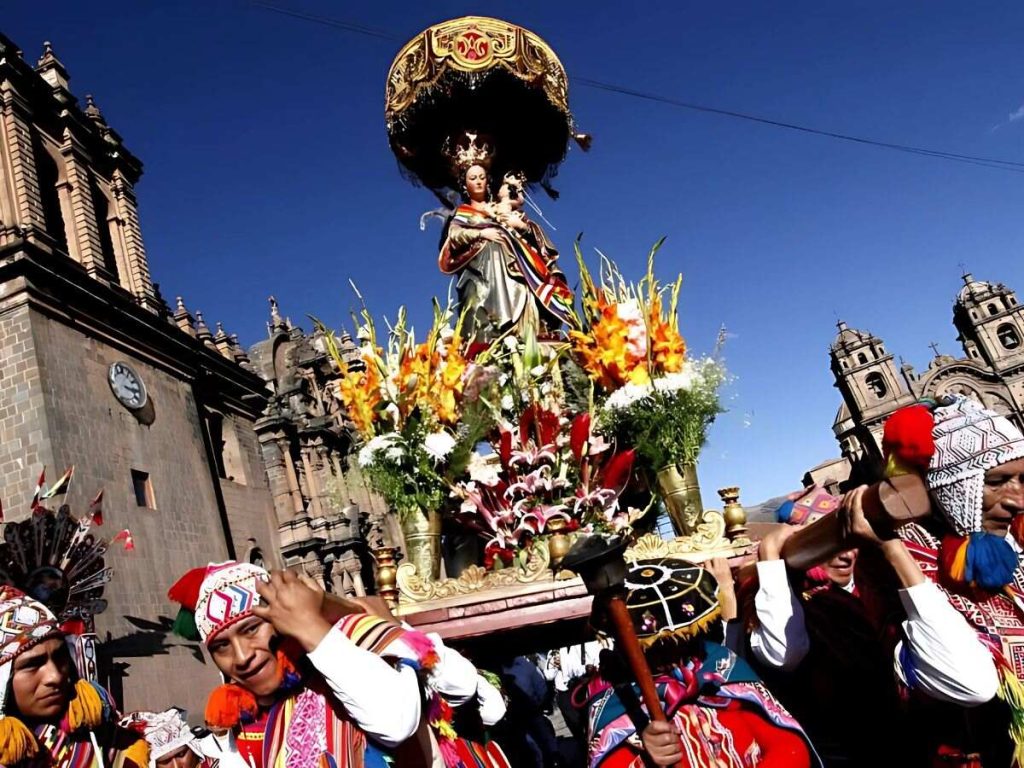
In the Corpus Christi in Cusco, the Virgin of the Nativity is also venerated under the name Our Lady of Almudena, as her image comes from the Church of Almudena, located in one of the traditional neighborhoods of the imperial city.
Virgin of Remedies
The Virgin of Remedies was not originally part of the Corpus Christi festivity in Cusco. Her official incorporation occurred in 1980, thanks to the authorization of Archbishop Ricardo Durand Flórez and the efforts of Monsignor Vallejo Santoni.
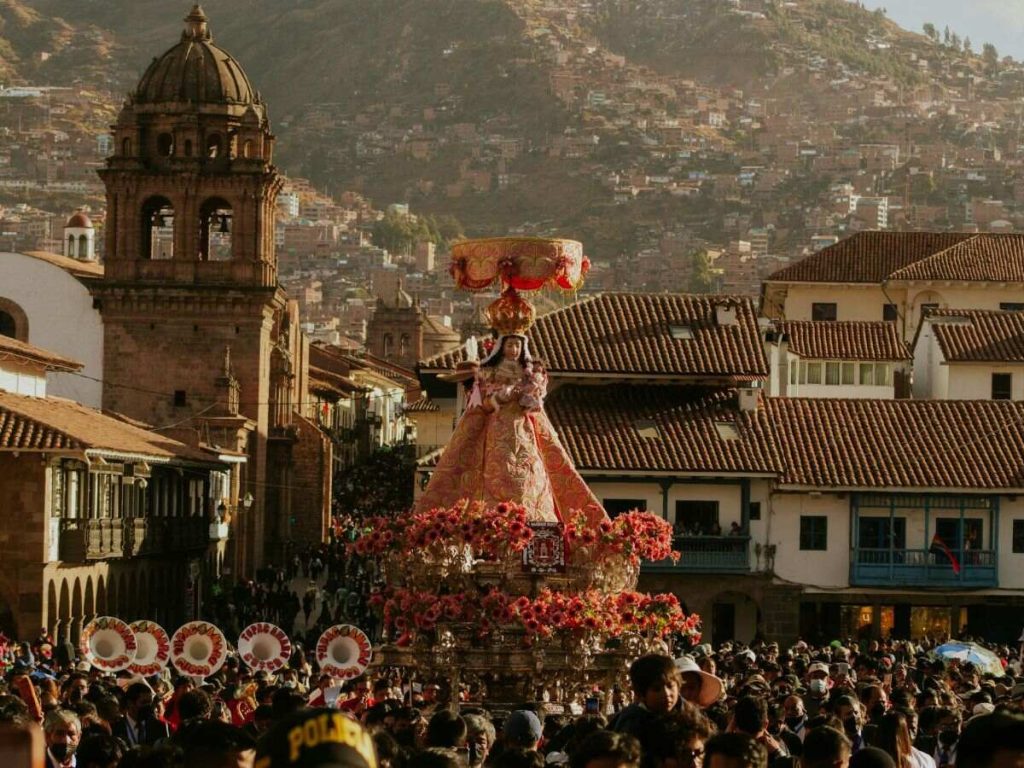
This Marian devotion is a symbol of comfort and hope for the sick and afflicted, which is why many faithful attribute miracles related to health and protection to her. During Corpus Christi, her image is transferred from the Church of Santa Clara and is recognized for its elegance and solemnity.
Virgin Purified
In Cusco’s Corpus Christi, the Virgin Purified is recognized for carrying a candle in her hand, which has led many faithful to also identify her as the Virgin of Candelaria. She usually carries baskets and a small child in her right arm. Her image comes from the Parish of Saint Peter, located in the heart of the city’s historic center.
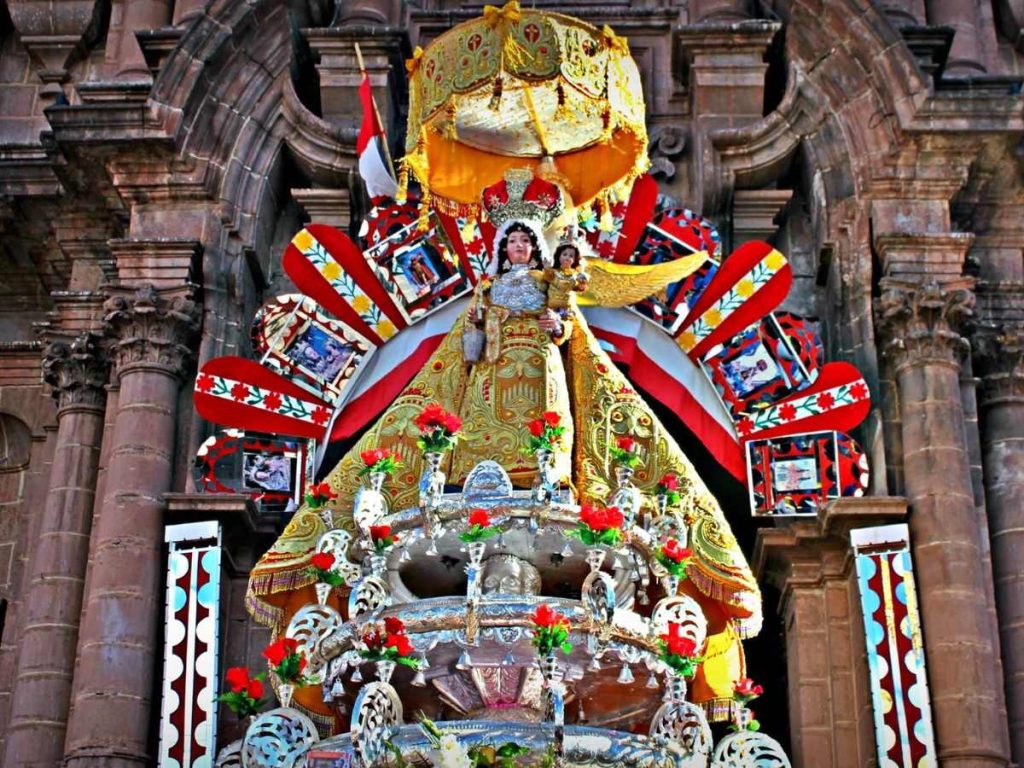
Virgin of Bethlehem
In Cusco, the Virgin of Bethlehem is one of the most respected and beloved figures. Every year during Corpus Christi, her image is carried in procession from her parish to the Cusco Cathedral. Her image is a symbol of protection and hope for the local community and is especially cherished by the faithful during Cusco’s festivities.
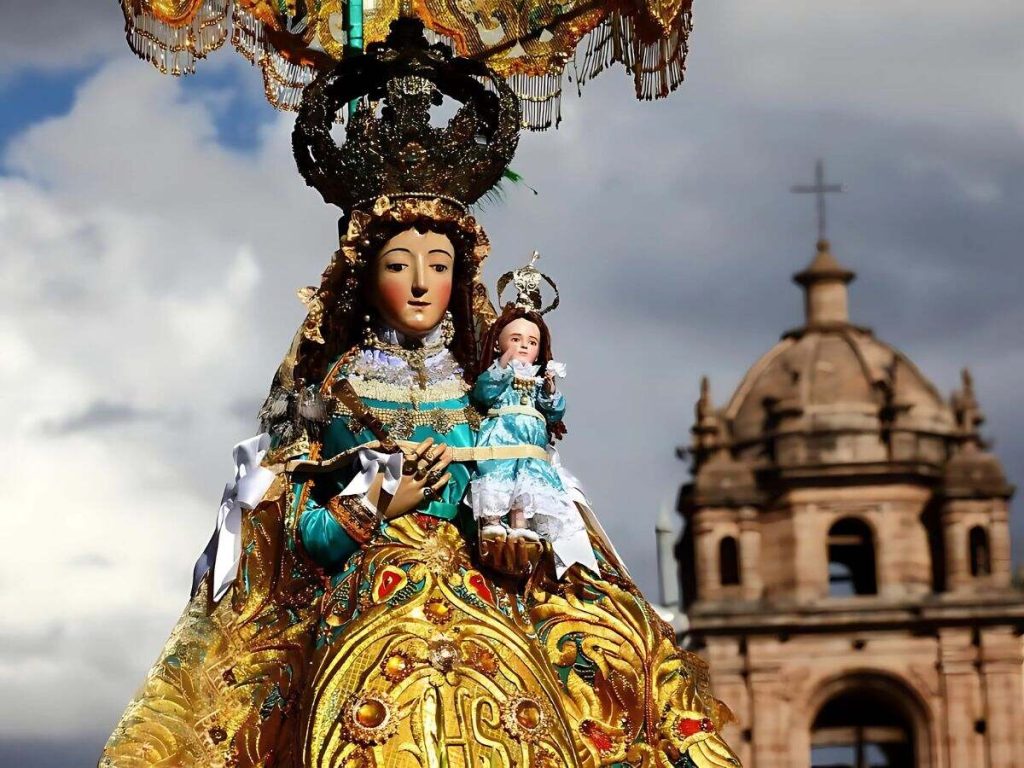
In the Corpus Christi of Cusco, Mamacha de Belén, as she is locally known, wears a gold brooch called a tupu, which belonged to the daughter of Inca Sayri Túpac, as well as an emerald cross that was a gift from Bishop Mollinedo.
Immaculate Virgin
The Virgin of the Immaculate Conception, affectionately called “La Linda” (The Beautiful One) due to the delicacy of her features and the richness of her gold adornments, is one of the most venerated images in Cusco. Her presence in Corpus Christi comes from the Church of the Company of Jesus, located near Cusco’s Plaza de Armas, and she stands out for the devotion she inspires among the faithful, reflecting the cultural and religious richness of the city.
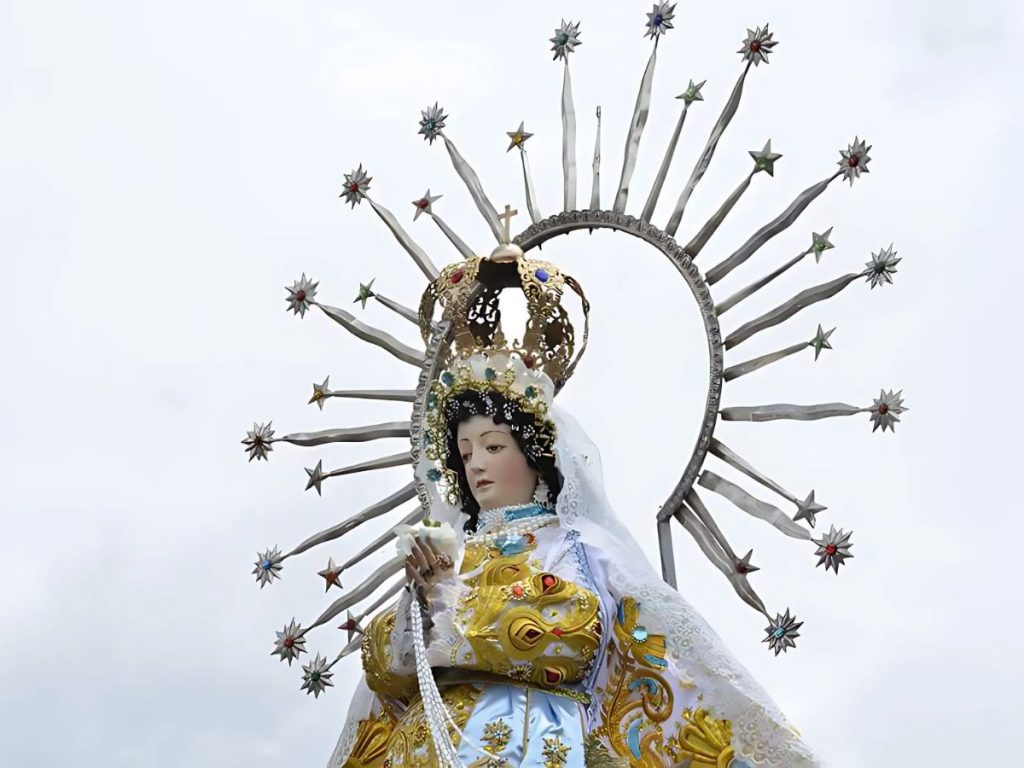
The Octave of Corpus Christi in Cusco
The Octave of Corpus Christi is an eight-day period that immediately follows the main celebration. During this week, various religious activities such as processions, masses, and acts of devotion take place, keeping alive the veneration of the Eucharist and the city’s saints.
One of the most significant events of the Octave is the return of the images of saints and virgins to their original parishes after having remained in the Cusco Cathedral during the central celebration.
Gastronomy during Corpus Christi in Cusco
The Corpus Christi festival in Cusco is not only known for its religious fervor and colorful processions but also for the rich gastronomy that accompanies these celebrations. During this time, families and communities prepare typical dishes that reflect their cultural identity.
Chiriuchu, the typical dish of Corpus Christi in Cusco
During this festival, Chiriuchu, whose name in Quechua means “cold chili,” is a dish composed of a mix of ingredients from the coast, highlands, and jungle. Its components include roasted guinea pig, boiled chicken, charqui (dried meat), sausage, blood sausage, fresh cheese, toasted corn, among other products. A distinctive feature of this dish is that it is served cold.
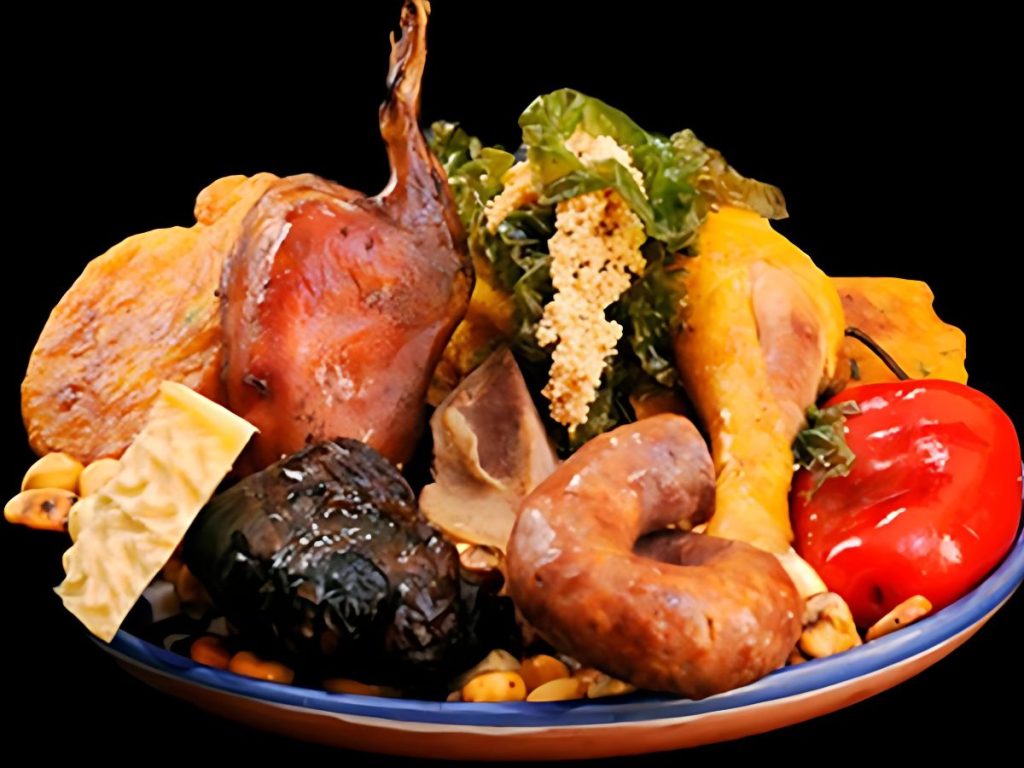
Quinoa Soup
If you want something warmer, quinoa soup is an excellent option. This dish is light and nutritious, perfect for fighting Cusco’s cold weather. It is prepared with quinoa, vegetables, and sometimes includes small pieces of meat. It is also ideal for those adapting to the high altitude.
Fried Trout
Fried trout is a traditional food especially savored during these celebrations. It is made with fresh trout and is commonly served with rice, fried yucca, and in some cases, with Creole sauce.
Recommendations for Corpus Christi in Cusco
- Carry your identification documents with you.
- Take good care of your personal belongings.
If you want a comfortable spot, try to arrive early. - If you are with children, watch them carefully to avoid getting lost or suffering in the crowd.
- Wear a hat and sunscreen to avoid sunburn.
Stay hydrated at all times. - Bring a camera to capture photos of this Cusqueña tradition.
Recommended Tours during Corpus Christi in Cusco
If you visit Cusco during these dates, you can take advantage of the opportunity to visit these archaeological sites, each with something special to offer. Don’t miss this opportunity to get to know Cusco and enjoy its June traditions.


